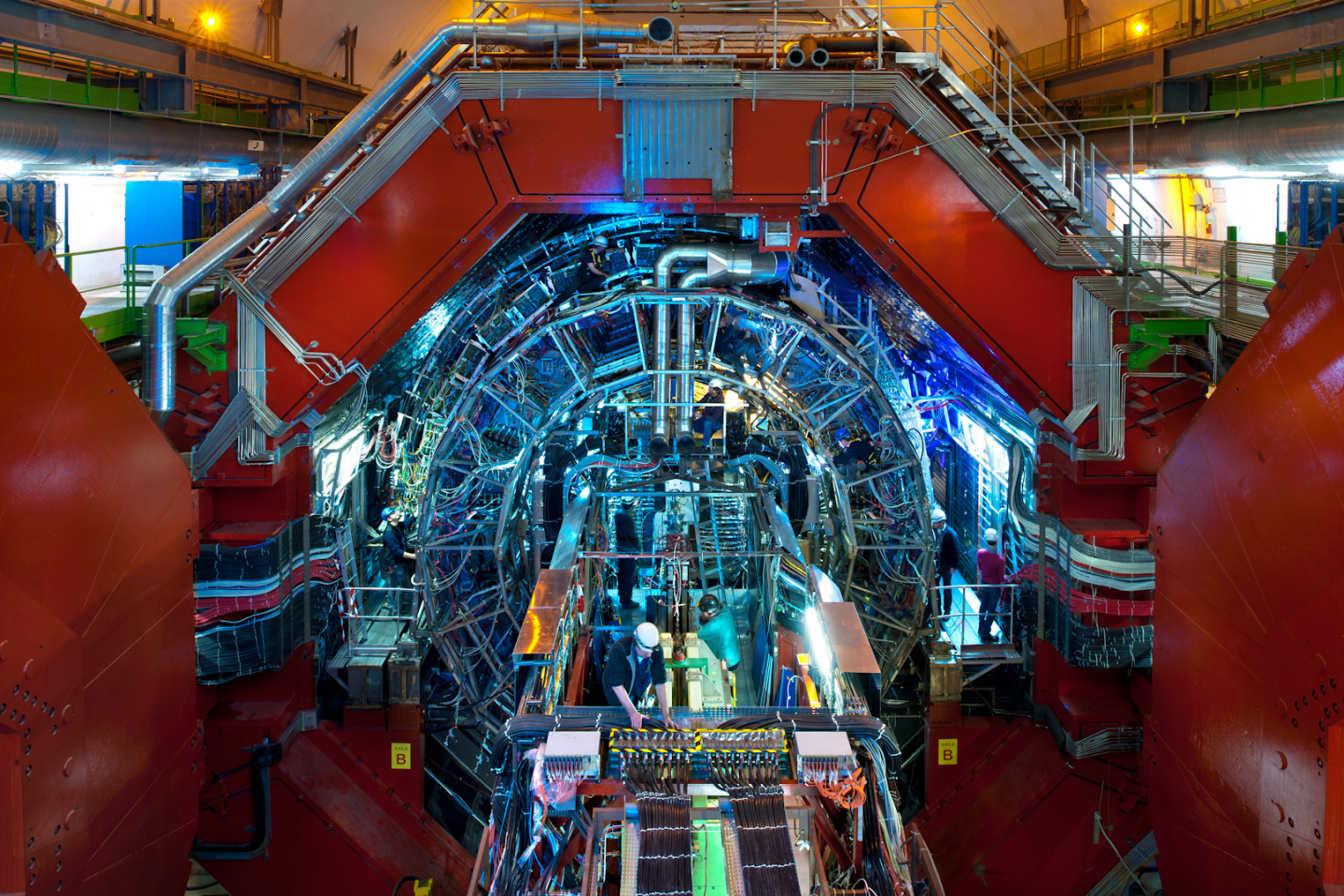Group of Hadronic Physics (GFH)
- Home
- Research
- DRCC - Department of Cosmic Rays and Chronology
- Group of Hadronic Physics (GFH)
Studying the experimental, theoretical and phenomenological aspects of hadronic interactions at high energies.
In preparation
In preparation
The main topic of interest in high-energy nuclear physics is matter under extreme conditions. In order to achieve these extreme conditions, particle accelerators have to be able to accelerate atomic nuclei such as lead or gold, which are formed by several tens of protons and neutrons, to extremely high energies. To do so, fully ionized atoms, completely stripped of all electrons, are used. This is why this research field is broadly called the study of “ultra-relativistic heavy ion collisions”.
Once two nuclei collide at extremely high energies, it is believed that the particles that make up protons and neutrons, which are quarks and gluons, will dictate the dynamics of the system. In these conditions, it is expected that a new state of matter with a large energy density, called the Quark-Gluon Plasma (QGP), will be formed. After a short amount of time, this plasma will cool off and quarks and gluons will no longer be found independently, but rather in bound states such as protons, pions, kaons and others.

Schematic illustration of a heavy ion collision at relativistic speeds. These ions are initially flattened out because of relativistic Lorentz contraction. Once the system has completely evolved, a large number of particles are produced and eventually detected by experiment. Source: Master’s thesis of Geraldo Magela Severino Vasconcelos, IFGW/Unicamp (2008), page 11. Figure adapted from the PhD thesis of R. Sahoo, Utkai University (2007). For further information, check this link.
Reaching the conditions necessary for the creation of the QGP is no easy feat. For that, very complex accelerators are needed to get to very high energies. These energies are so large, in fact, that a single lead nucleus accelerated by the LHC carries the same amount of kinetic energy than a ping-pong ball travelling at a (macroscopic!) speed of 36cm/s. There are currently two large accelerators able to provide heavy ion collisions: the “Relativistic Heavy Ion Collider” (RHIC), at Brookhaven, USA, and the “Large Hadron Collider” (LHC), at CERN, in Geneva. Two large, heavy-ion-specialized experiments are assembled at these two accelerators: the “Solenoidal Tracker at RHIC” (STAR) experiment and the “A Large Ion Collider Experiment” (ALICE) at the LHC.

A photograph of the ALICE experiment, assembled approximately 50 meters below the surface in Geneva, Switzerland. Check out http://aliceinfo.cern.ch/Public/Welcome.html for more information.
Within the hadronic physics group, Prof. Jun Takahashi and Prof. David Chinellato participate directly in the ALICE experiment. More specifically, the ALICE UNICAMP group focuses their studies on the production of strange quarks, which are one of the four types of quarks that cannot be easily found in ordinary matter. That’s because, while six quarks are known to exist, particles such as protons and neutrons are essentially only made up of “up” (u) and “down” (d) quarks and therefore quarks such as the “strange” (s), “charm” (c), “beauty” (b) and “top” (t) can only be traced back in experiment if collisions involving large energies took place. It is expected that an increased production rate of strange quarks might take place if a system transitioned to a QGP, and therefore studying strange particle production rates may tell us if we managed to reach this extraordinary state of matter.
In addition to participating in experiments, the high-energy nuclear physics group is also engaged in phenomenological work. This involves the study of several particle production models and event generators, including those that model the hydrodynamic evolution of the plasma assuming that it behaves like a strongly interacting, relativistic fluid. This complementary work is of crucial importance, considering that interfacing experiment and theory is what should provide direction to the research as a whole.
Video ©CERN on behalf of the ALICE experiment
In preparation
Universidade Estadual de Campinas - Instituto de Física Gleb Wataghin
Rua Sérgio Buarque de Holanda, 777
Cidade Universitária, Campinas - SP, 13083-859
Fone +55 19 3521-5297
Fax +55 19 3521-4147